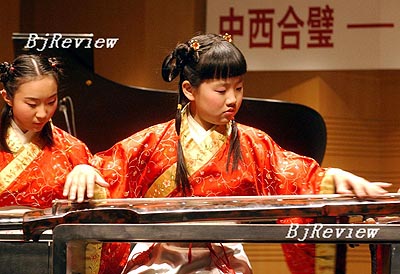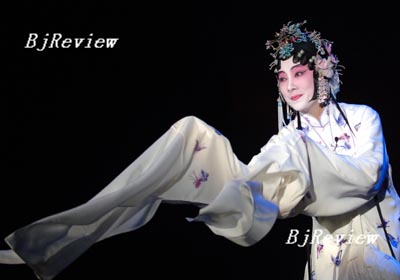|

The Convention for the Safeguarding of the Intangible Cultural Heritage defines intangible cultural heritage as the practices, representations, and expressions, as well as the knowledge and skills that communities, groups and, in some cases, individuals recognize as part of their cultural heritage. Along with structured cultural heritage, intangible heritage presents a nation with a sense of unity and belonging, beneficial not only to itself but also to humanity as a whole. Recognizing four unique areas of China’s intangible heritage, the United Nations Educational, Scientific and Cultural Organization (UNESCO) added the following to its Protection List:
Kunqu-Father of Chinese Operas
Proclamation date: May 18, 2005
Brief Introduction:
Kunqu opera is one of the oldest and most refined styles of traditional Chinese theater still performed today, which can be traced back over 500 years. It is a synthesis of drama, opera, ballet, poetry recital, and musical recital, which also draws on earlier forms of Chinese theatrical performances such as mime, farce, acrobatics, ballad recital and medlies.
Originating in the city of Kunshan, situated in Suzhou, southeast China, Kunqu flourished during the Ming Dynasty (1368-1644). By the end of the 16th century, Kunqu spread from the Suzhou region to the rest of China, and for the next 200 years was the most prestigious form of Chinese drama.
The language of Kunqu is not the dialect of Kunshan or Suzhou, nor is it standard Mandarin. It is an artificial stage language, a modified Mandarin with some features of the local dialect.
The opera is characterized by its dynamic structure and elegant melody. When performed, the recitative is interspersed with arias sung to traditional melodies, called qupai. Each word or phrase is expressed by a stylized movement or gesture that is essentially part of a dance with strict rules of style and execution much like classical ballet. Even casual gestures must be precisely executed and timed to coordinate with the music and percussion.

As in all traditional Chinese operas, Kunqu uses a minimum of props and scenery, which permits the performers to more easily express their stage movements in the form of dance. The performers appeal to the audience’s imagination and conjure up a scene or a setting (such as a door, a horse, a river, a boot) with words, gestures and music. The costumes are elaborately exaggerated versions of the dress style in the Ming Dynasty.
In fact, most Kunqu plays would take several days to perform in their entirety. So any given performance generally consists of a few selected scenes from one or more well known plays. The classic pieces of Kunqu include The Peony Pavilion and The Hall of Longevity.
Even Chinese may not tell the much differences between Kunqu and Peking Opera, another traditional Chinese performing art that survives better than Kunqu. Basically, the main accompaniment instrument of Kunqu is flute, while that for Peking Opera is jinghu. Kunqu performers normally dance when they are singing, but performers of Peking Opera would not sing when they dance or perform other actions.
Kunqu has suffered a gradual decline since the 18th century. Of the 400 arias regularly performed in the mid-20th century, only a few dozen continue to be performed today. The Kunqu passes on through the efforts of dedicated connoisseurs and various supporters who seek to attract the interest of a new generation of Kunqu lovers.
Guqin and Its Music-An Old Instrument Embodied Spiritual Pursuit
Proclamation date: November 7, 2003
Brief Introduction:
Guqin is the classical long zither of China, with a history of more than 3,000 years. It is a seven-stringed instrument. Its body is a long wooden sound box. Two sound holes, which are called Phoenix Pool and Dragon Pond, can be found at the bottom.
Being rested on a stand, the instrument is played by plucking and pressing the strings with the right hand and left hand respectively. It provides rich and colorful quiet sound, with airy, floating or simple and solid scattered notes. With a long history of development, the playing of this instrument has become a distinctive performing art.
Guqin is believed to be a representative instrument of traditional Chinese musical culture. The music of Guqin is chaste, pure and elegant, and to play the instrument the artist is required to be highly concentrated on the abstract spiritual world the music delivers. No other traditional instrument can be compared with Guqin in terms of embodying traditional Chinese culture.
Guqin, along with chess, calligraphy and painting, were four subjects scholars trained themselves in ancient China. As it was endowed with ideals and emotions, Guqin and its music have become a symbol of the ideal personality of Chinese intellectuals, not just an instrument.
However, the highly refined nature of the art of Guqin, by which it distinguished itself in history, is one reason to put the instrument in the danger of being marginalized as fashion changes. In fact, as early as in Tang Dynasty (618-907), the position of Guqin music as the dominant source of music in intellectuals’ life met a serious challenge.
|